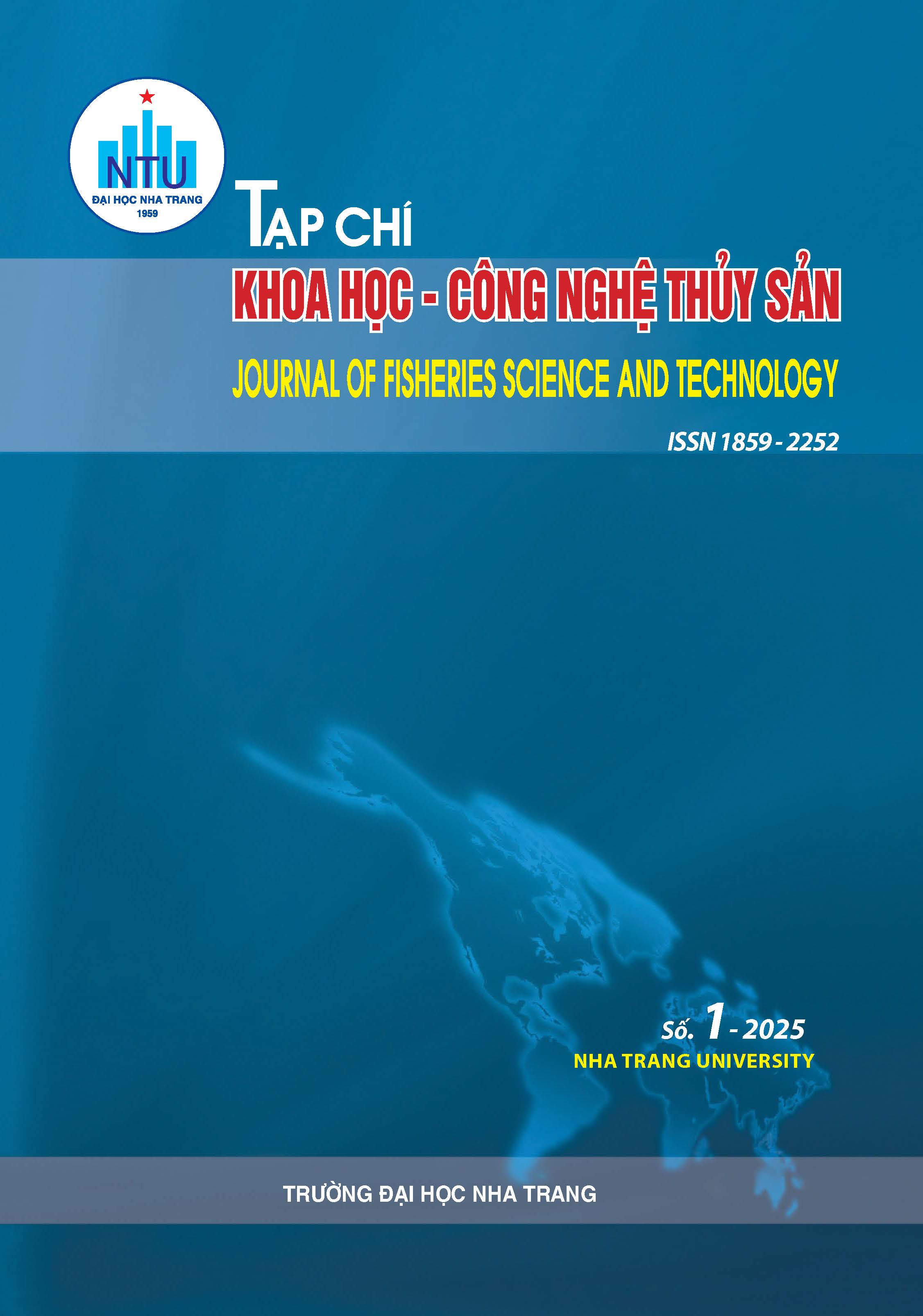##plugins.themes.huaf_theme.article.main##
Abstract
This study aimed to evaluate the effects of different diets on the growth rate, metamorphosis and survival rate of the hard clam (Meretrix meretrix Linnaeus, 1758) from the free-swimming (D-veliger) larvae stage to the crawling larvae stage, transitioning to a benthic lifestyle. The experiment was using six dietary treatments comprising various combinations of Isochrysis galbana, Chaetoceros mulleri, and Nannochloropsis oculata at Agricultural Institute of Thanh Hoa in March 2024. Growth performance, survival rates, and metamorphosis duration were assessed under controlled experimental conditions. The results revealed that the NTA-4 treatment (1:1 ratio of I. galbana and C. mulleri) was the most effective, with larvae achieving the largest size (203.3±0.5 µm after 7 days), the shortest metamorphosis duration (4 days), and the highest survival rate (81%), with statistically significant differences compared to other treatments (p<0.05). The NTA-6 treatment (a mix of the three algal species as I. galbana, C. mulleri, and N. oculata with the ratio of 1:1:1) showed slower growth and longer metamorphosis duration (p<0.05), but a comparable survival rate (p>0.05). Conversely, the NTA-3 treatment (solely N. oculata) resulted in the poorest outcomes, with the longest metamorphosis duration (7 days), the smallest size (178.2±1.2 µm), and the lowest survival rate (70.3%), showing significant differences from other treatments (p<0.05). This study highlights the importance of combined diets, particularly the combination of I. galbana and C. mulleri algae, in improving the growth and survival rate of M. meretrix larvae. The findings provide valuable scientific insights for optimizing seed production techniques and supporting the sustainable aquaculture of this species in Thanh Hoa Province.
Keywords: Algal diet, D-veliger, hard clam, larvae, Meretrix meretrix, Pediveliger.

